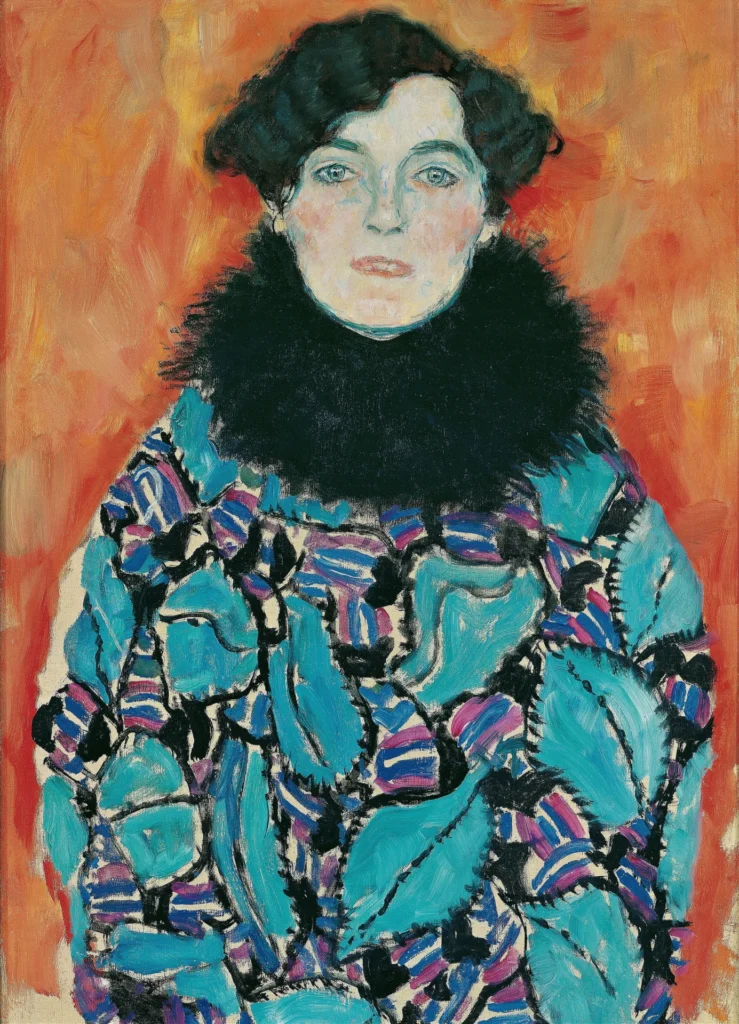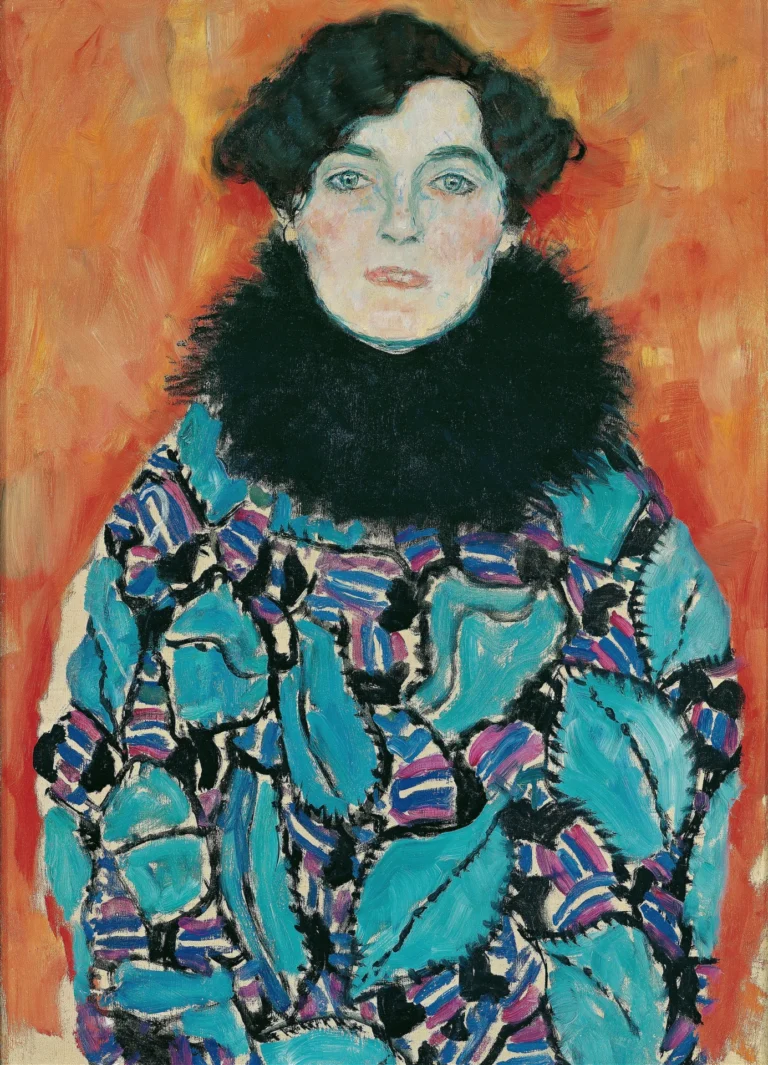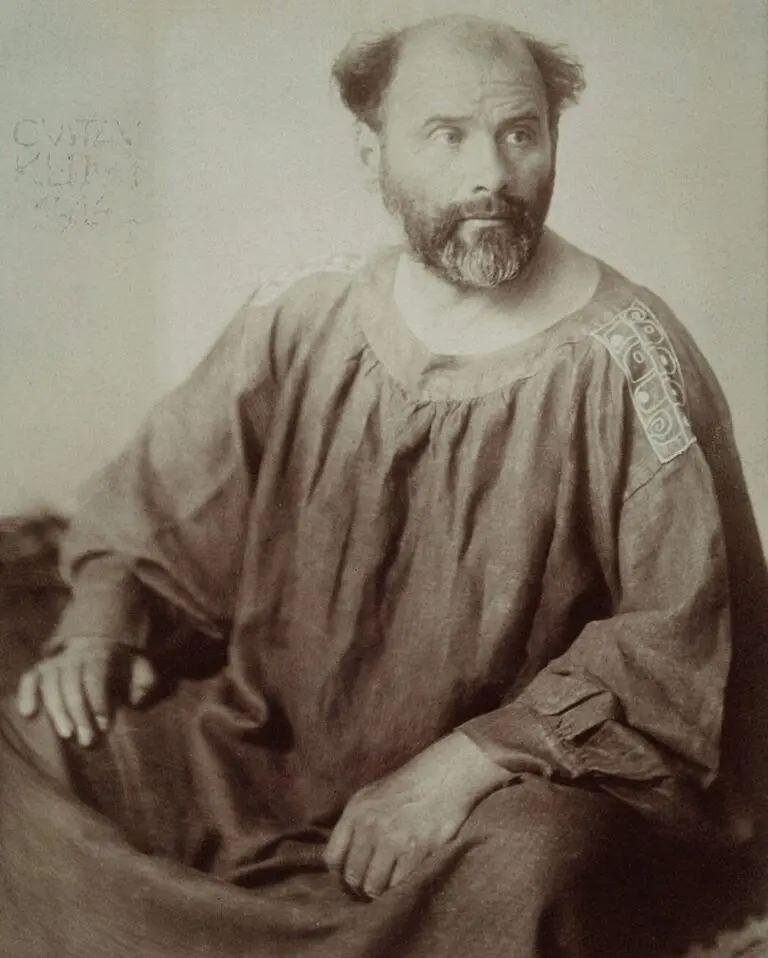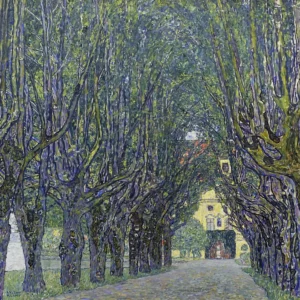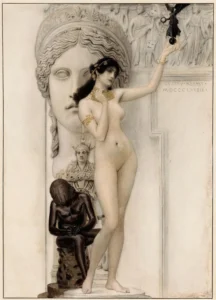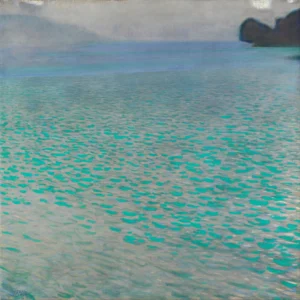Johanna Staude (1917)
Created between 1917 and 1918, Gustav Klimt's 'Portrait of Johanna Staude' remains a captivating example of his late works, capturing the essence of his subjects through texture and color. The painting features Johanna Staude in a blouse designed by Martha Albers for the Wiener Werkstätte, set against an orange background that enhances the blue fabric. The unfinished state of the portrait, especially at the mouth, adds an intriguing layer of narrative regarding Klimt's working style and his relationship with Staude, a close friend and artistic companion.
1917 - 1918
About the Artwork
The 'Portrait of Johanna Staude' was painted during a time when Klimt was exploring deeper themes through symbolism and personal connections. Johanna Staude served as a muse for Klimt, reflecting both a personal friendship and an artistic collaboration. The details in her blouse reveal Klimt's admiration for the Wiener Werkstätte movement, demonstrating his commitment to integrating art and fashion. The portrait's unfinished aspects invite speculation about Klimt’s intentions and relationship with Johanna; his quip about her absence from the studio after expressing curiosity about his completion of the painting adds an element of personal interaction to the art's narrative. This unfinished quality ultimately adds to the intrigue and beauty of the work, resonating deeply with Klimt's artistic philosophy.
Did You Know
Johanna Staude was not only a model for Klimt but also a close friend, indicating the personal connections he maintained with individuals who inspired his art.
The unfinished nature of the portrait sparked curiosity and myth around Klimt’s working process, particularly his statement to Staude that linked her visits to the completion of the artwork.
The beautiful blouse worn by Johanna Staude is designed by Martha Albers, highlighting Klimt’s engagement with the Wiener Werkstätte movement, renowned for its innovative designs and craftsmanship in early 20th-century Vienna.
Liked what you see? Add it to your collection.
Enjoyed reading? Share it.
... continued
Subject
Johanna Staude (née Widlicka, 1883–1967) was a friend of Gustav Klimt and is believed to have modeled for him on several occasions, as well as for Egon Schiele. She described herself as a painter, although no works by her are known. She worked in the household of the writer Peter Altenberg and was known for her artistic flair and fashionable appearance.
The Painting
- The portrait is characterized by its unfinished state, particularly the mouth, which is visibly incomplete. According to legend, when Johanna Staude asked Klimt why he never finished the painting, he replied, "Because you would never come back to the studio."
- The painting features Johanna Staude wearing a blouse made from a fabric designed by Martha Albers for the Wiener Werkstätte, a prominent arts and crafts movement in Vienna. The fabric pattern, named "Blätter" (leaves), was important to Klimt, who was a supporter of the Wiener Werkstätte.
- The background of the portrait is painted orange to enhance the effect of the blue fabric of the blouse.
Details
- The painting is part of the collection at the Österreichische Galerie Belvedere in Vienna, Austria.
- It measures 70 x 50 cm and is classified under the Art Nouveau (Modern) style.




